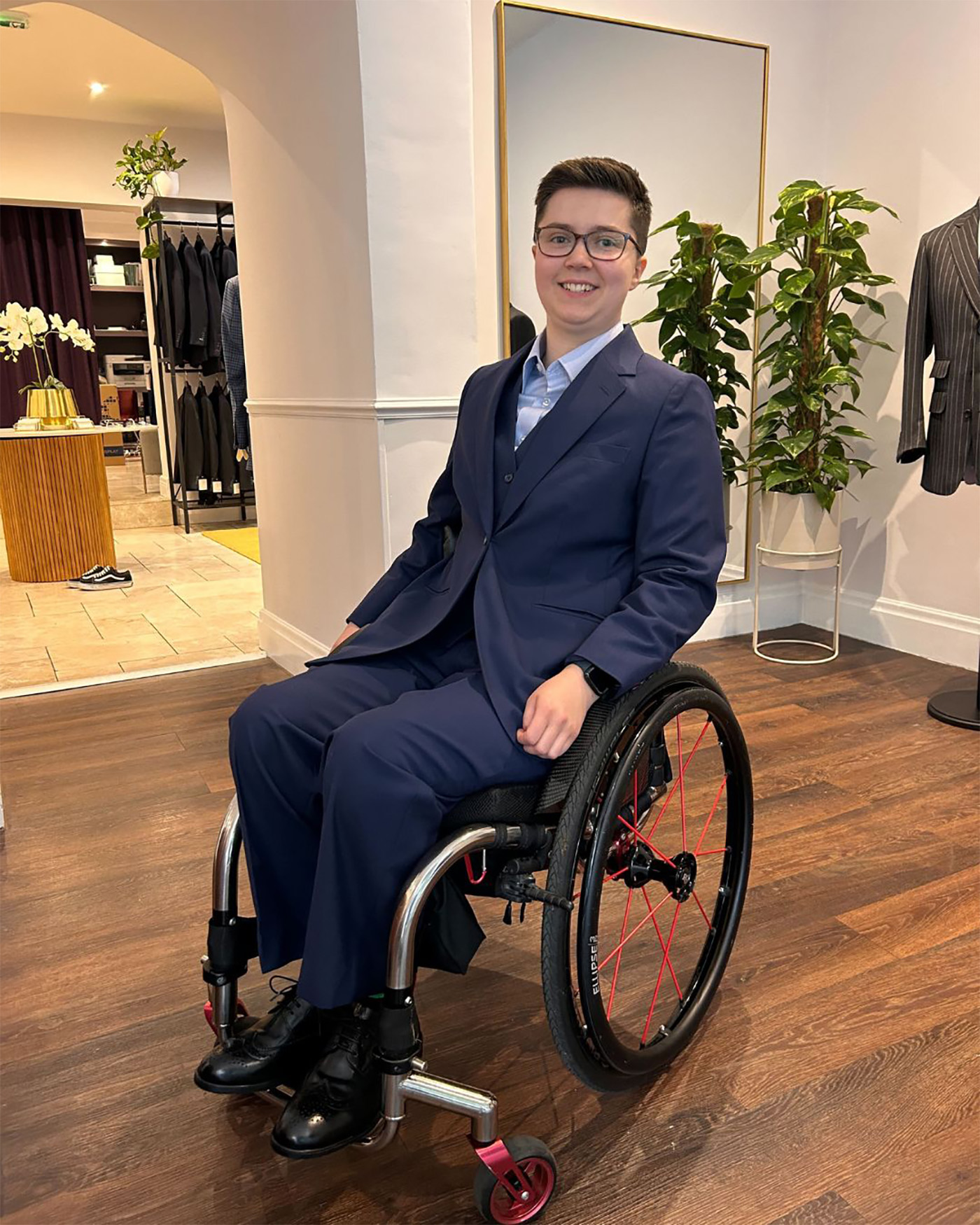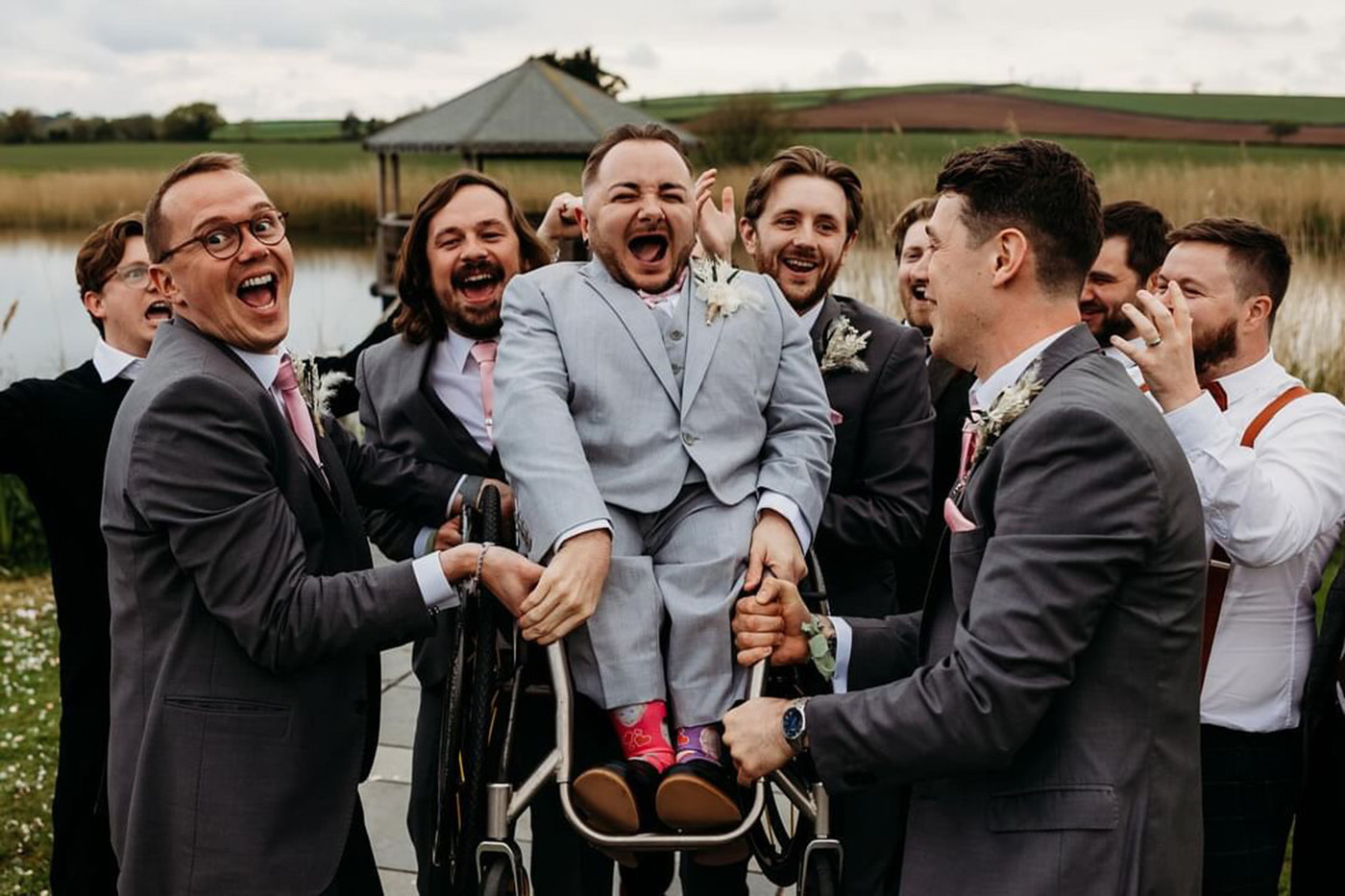Article
Suits that Fit Every Body: The Art of Adaptive Tailoring

The beauty of bespoke tailoring lies in its endless possibilities. Just as no two bodies are alike, no two minds or experiences are the same. Everyone thinks, moves, and feels differently, and we celebrate that. Our Adaptive Tailoring service is designed to meet the unique needs of each client, whether that means altering garment structure, closure systems or fabrics to ensure comfort, ease and confidence.
Why is Adaptive Tailoring so important?
Adaptive Tailoring is the art of customising clothing to meet individual needs. By making thoughtful modifications during the tailoring process, we ensure that garments work with the individual, not against them, whether that means easier closures, alternative cuts, or added room for mobility aids. Many of our clients with physical or mental disabilities have shared a common frustration of settling for designs that don’t reflect their personality or sizing up for ease of movement.
We believe you shouldn't have to sacrifice style for practicality.
Our team is trained not only in technical skill but also in inclusive client care. We understand that building a genuine rapport begins with awareness, evaluating each client’s preferences, communication styles, and comfort levels, and adapting accordingly to create a warm and respectful experience from the very first consultation.
Made to Move With You

Mobility looks different for everyone. For example, some of our clients may stand for short periods or require ease of movement throughout the day. We create garments that move with you, not against you, by integrating practical adaptations such as:
Jackets cut shorter at the hem
So they sit neatly on the lap when seated, reducing creasing or bunching.
Longer sleeves on the jacket and shirt
Allowing for natural bending of the arms while seated or using mobility aids, ensuring the right amount of cuff is showing.
Elasticated waistbands and adjustable closures
To provide flexibility throughout the day, especially helpful for those with fluctuating posture, amputees or wheelchair users.
A single vent (slit on rear of jacket)
To prevent the jacket from bunching when seated or catching on wheelchair wheels.
Flat-front trousers with longer inseams
So they don’t ride up while sitting and to avoid pressure points.
Side access zips / alternative openings
That make dressing easier for those with limited dexterity or who dress with assistance.
Style as Self-Expression

For some, tailoring is about celebrating a part of themselves they’re proud of. For others, it’s about creating a subtle silhouette that helps them feel comfortable.
With our Adaptive tailoring process, you have access to the same full range of options to express your personality and style. Whether it’s vibrant fabrics in your favourite colour, linings that include your favourite hobby or memory, unique lapel styles, or personalised embroidery, every element can be tailored to suit your vision.
Some of the ways we tailor for certain preferences:
Designing tailored silhouettes with discreet adjustments for stoma bags or abdominal support, so clients can feel confident in a style that reflects their identity, without compromising their preferred fit.
Sleeve and trouser lengths are carefully adjusted to create a balanced look, such as including extra room or hidden panels to comfortably accommodate prosthetics.
Designed for Sensory Comfort

We understand that clients with visual impairments may rely on touch to navigate their clothing, while those with sensory sensitivities may find certain fabrics, seams, or fastenings uncomfortable or overwhelming. That’s why we incorporate thoughtful adaptations that make dressing easier and more intuitive, and why our consultants are trained to use clear, descriptive language to talk through each design detail in a way that supports clients with visual impairments.
Strap at the back of the suit
To help blind or visually impaired clients dress independently or with assistance.
Tactile markers inside jackets
To provide orientation cues, making it easier to identify the front, back, and sleeves by touch.
No-button, no-zip options
With magnetic or Velcro fastenings that are discreetly integrated into traditional suit designs for ease of use.
Minimal seams and soft, stretch fabrics
To reduce irritation and pressure points for neurodivergent clients or those with sensory challenges.
Accessibility of Stores
Most of our locations are accessibility-friendly, and we’re happy to make additional arrangements to suit your needs. For detailed information on venue accessibility, please visit the Adaptive Tailoring page on our website.

